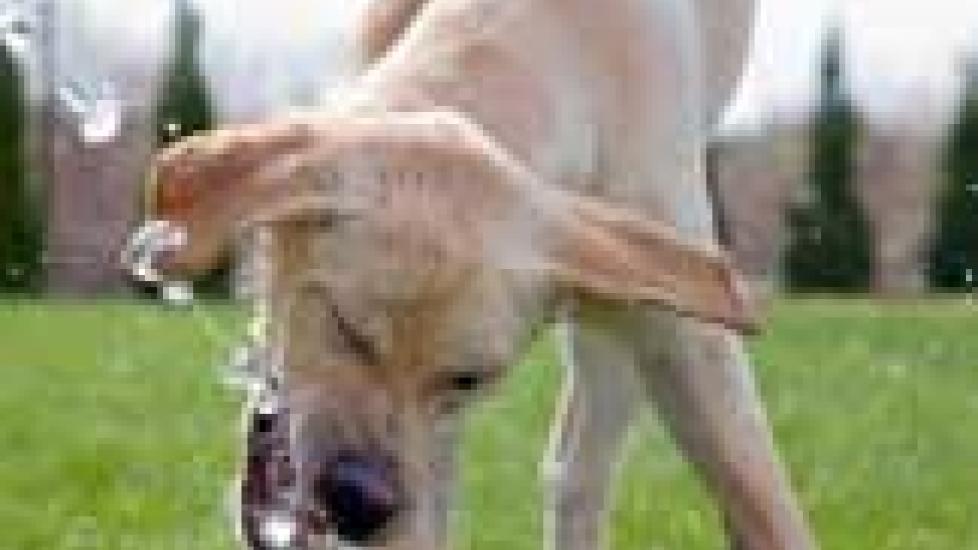Water – The Forgotten Nutrient
I’ve talked before about the MyBowl tool and how it can help us all learn about the importance of balanced canine nutrition derived from high quality ingredients. But look below the food bowl on the web page. Do you see the water? I’d be willing to bet that many eyes have passed right over it, immediately focusing on the protein, carbohydrate, fat, oil, vitamin, and mineral sources pictured above.
Water doesn’t get the respect it deserves. While not taking in the appropriate amount of almost any of the nutrients pictured in the My Bowl tool will eventually make a dog sick, not getting enough water can bring about illness in just a few hours, especially if temperatures are high or if a dog is especially active.
About 60 percent of an adult dog’s body is made of water, and the percentage is even higher in puppies, which explains why pups run into problems with dehydration more quickly than adults. To get a rough idea of how much water your adult dog needs, you can use the following formula:
Thankfully, as long as an adult dog is healthy you don’t need to calculate the exact amount of water he needs or measure the amount he is taking in. Just keep a bowl of clean water available at all times, or offer it frequently when a dog is exercising, and he will help himself to what he needs.
Water quality is just as important as quantity. My rule of thumb is if it doesn’t look like something you’d want to drink, your dog probably shouldn’t be drinking it either. Keep water bowls clean by rinsing them out and refilling them daily. Also, make sure to scrub them out once or twice a week. Sanitize your dog’s food bowl while you’re at it too.
One reason I only use the formula presented above when a dog appears to be drinking an abnormally large or small amount of water is because dogs can meet their hydration needs from a variety of sources. The water bowl is the most obvious one, but food plays a role too. Canned food contains a lot more liquid than dry, so dogs that eat canned diets may appear to drink less because they are getting so much water from their food. Water coming from puddles, the toilet, or from anywhere else needs to be factored in as well.
Rather than calculating exactly how much your dog is drinking, follow these three general rules to keep your dog going strong:
- provide unrestricted access to fresh, clean water
- Feed an appropriate amount of a nutritionally balanced food made from high quality ingredients
- Promote sufficient amounts of exercise
That said, if you do think your dog is drinking an abnormally large or small amount of water, talk to your veterinarian. Either extreme can be a sign of illness.

Dr. Jennifer Coates
Image: Marcin Ciesielski/Sylwia Cisek / via Shutterstock
